#Wiccan or pagan beads
Text
Spiritual Beads
They are used to count prayers, repetitions, chants, devotionals, and meditation. In some cases, each bead symbolizes a particular event or concept. Beads can be made into bracelet, necklaces use to decorate tool, rattles,bells or any scared object and made from all types of materials.
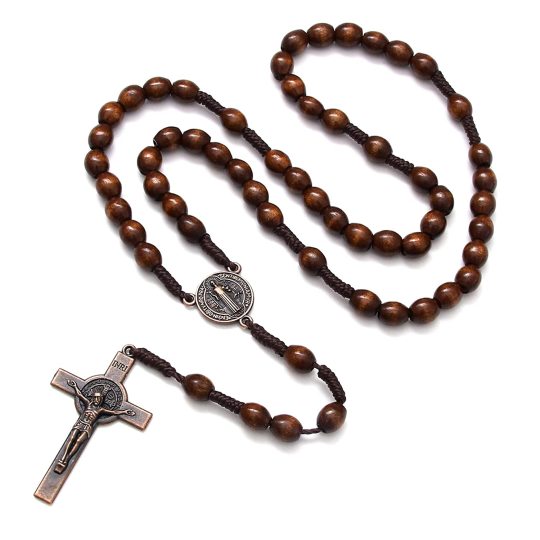
Catholic beads
Origin: The origin of prayer beads dates back to ancient history. Prayer beads have been used by different religions such as Hinduism, Buddhism, Islam, Sikhism, Bahá’í Faith, Shamanism and Christianity. Therefore, Christianity was not the first religion to adapt to this tradition. In fact, the Bible does not speak about prayer beads. Neither Jesus, not His disciples or the early church used prayer beads. So some religions like Judaism won't use them. On the other hand prayer beads can be used and made for prayer but also for devotees of a pacific Saint, Deity, Spirit, or Ansestors to help you connect to that spirit. There are a variety of different beads made for different spiritually so choose the one that best fit you in your practice.

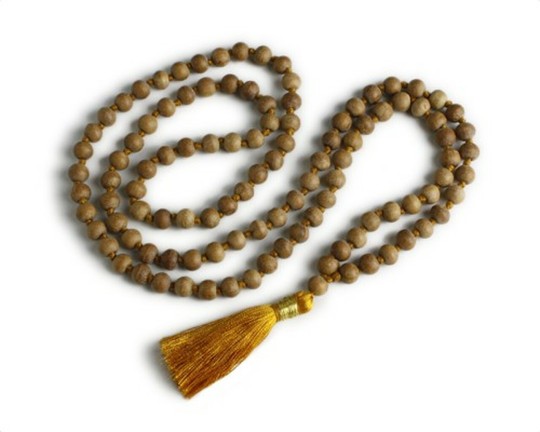
Above are beads for pagan/wiccans and need use Buddhism.
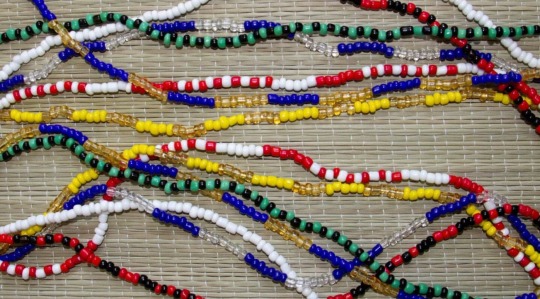
In the Orisha/Lukumi Tradition, Elekes ☝️ are beaded necklaces in patterns and colors of the Orisha. Once an individual’s head is crowned to an Orisha, other adornments such as bracelets and necklace or constructed indicating the initiates head Orisha is worn indicates which Orisha you walk with or became a priest/ess of.
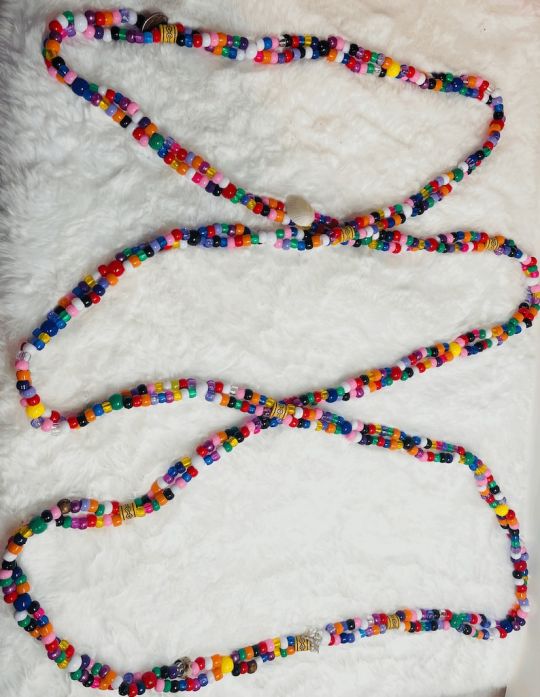
In Vodou these aren’t considered necklaces, even though they make look like necklace in those pictures which are called kolye, and translates to necklace there not worn as such. Kolye are the mark of an initiate; They're made for you when you enter the djevo (chamber) and how it's worn shows the type of initiation you had. What is on/in a kolye represents specific lwa as well as specific concepts and/or pwen specific to spirits.
It’s a pretty important thing to wear and it serves important purposes during initiation. (no matter what the internet tells you, in haitian vodou they don't wear a necklace like Orisha religions do, But in some cases in some regions of Haiti the kolye is worn as a necklace) Houngans during a ritual carry the machete and wearing their kolye that indicate he is a houngan asogwe, and a manbo carries a dwapo wears a kolye across her body, which says that she is a manbo asogwe (the highest initiatory rank in the religion) and the smaller kolye's worn around the neck says that a person is initiated, but is not a manbo asgowe.
#Spiritual beads#Prayer beads#Types of religious beads#Vodou beads#Santeria beads#Rosery beads#Wiccan or pagan beads#Spiritual#like and/or reblog!#Comment#google search#follow if you like
13 notes
·
View notes
Text




Prayer beads on sale at The Little Fox’s Cottage.
Are these the prayer beads for you?
#christian witch#witch#witchcraft#pagan#wicca#christian witchcraft#wiccan#paganism#christianity#witchblr#prayer beads#etsy#homemade
17 notes
·
View notes
Text
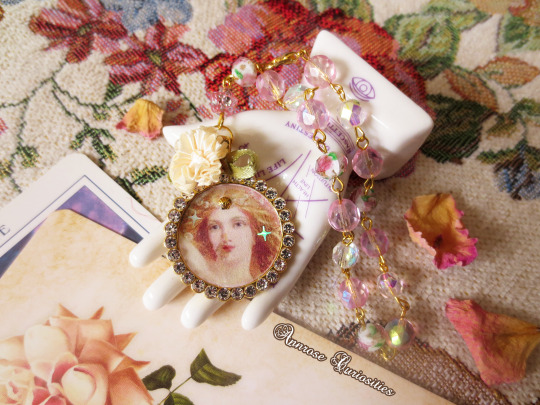
~*Goddess Aphrodite/Venus Prayer Beads*~
Shop | Instagram | YouTube
#aphrodite#goddess aphrodite#aphrodite prayer beads#venus prayer beads#love witch#love magic#love magick#aphrodite altar#goddess prayer beads#witchcraft#witch#witchblr#occult#paganism#wicca#wiccan#hellenic#hellenic polytheism
30 notes
·
View notes
Text

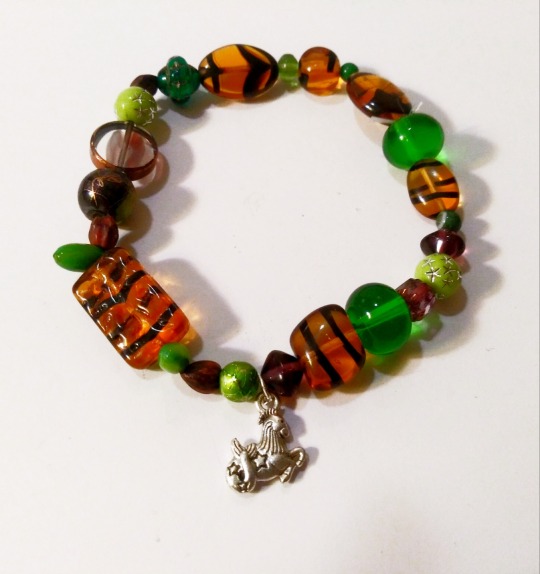
#capricorn#zodiac#spiritual#pagan#witchy#wiccan#wicca#alternative#alt fashion#alternative fashion#hippie#hippie chic#boho#hippie fashion#earthy#earth tone#glass beads#bracelets#indie fashion#jewelry store#etsy store#jewelry
24 notes
·
View notes
Text

This tiny bead was hand painted by Laura Gail Sweeney in 2024.
#artwork#beaded jewelry#miniature art#lauragailsweeneyart#witch community#wiccan#paganart#celtic paganism#witches
0 notes
Text
Introducing the Such Happy Campers ROs:
𝓑𝓪𝓼𝓲𝓵 𝓛𝓪𝓾𝓻𝓲𝓮𝓻

gender: male [trans, ftm]
age: 27
height: 5 ft 8 (172 cm)
occupation: none/volunteer/camp counselor
faith: Wiccan, pagan, spiritualist
physical description: Basil is slim, athletic and prone to moving with a measured, uncanny grace. He has fair skin that tans easily in the sun. His chin-length hair is artfully shaggy and dyed in brown and gold layers to resemble a tiger eye gemstone.
notable: Faded top surgery scars. A red and blue lightning bolt tattooed on his sternum. Multiple small, simple gold earrings.
clothing style and aesthetic: Basil always dresses in either bright, cheerful colors or various natural hues. He prefers his clothes to be layered and airy, often sporting vests or flowy shirts with boho-style patterns. Sometimes, he wears several beaded necklaces and rings.
hobbies and interests: folklore, woodwork, true crime, traveling

Basil is harmonious, optimistic and outgoing. He appreciates humor and puns (even if they're at his expense). He takes neither himself nor others very seriously.
When romanced however, a lot of his confidence turns into stricken stupidity. If you want to see a cocksure, assertive character losing his cool and tripping over himself, look no further.
Though it might just be a challenge to get him there.
#choice script#hosted games#interactive fiction#if: wip#romanceable characters#horror comedy#horror romance#original fiction#creative writing#originial character
53 notes
·
View notes
Text

https://www.etsy.com/listing/1283098734/divination-magic-pastel-goth-jewelry
🔮✨ Discover the allure of the mystical with our Ouija Planchette Pastel Goth Earrings!
💀🎀 These occult earrings for women feature delicate pink acrylic beads, ideal for those embracing their pagan or Wiccan beliefs.
🌸✨ Infuse your style with a blend of gothic and kawaii charm with these symbolic jewelry pieces.
🖤🔮 Perfect for gifting or adorning your own ears with a touch of magic!
🎁✨ CLICK LINK IN BIO to add them to your collection! 🛍️🔗
#etsy shop#gothic style#link in bio#handmade#buy handmade#small business#etsy#etsy finds#goth#etsyshop#OccultEarrings#PastelGoth#WiccaFashion#OuijaPlanchette#GothicKawaii#SymbolicJewelry#PaganGifts#WitchyStyle#MysticalFashion#GothicStyle#WiccanAccessories#PaganJewelry#OccultCharms#KawaiiGifts#WitchyVibes#MagicalEarrings#PinkAcrylicBeads#GothicGifts#WiccanFashion#PastelGothic
2 notes
·
View notes
Text
How to Become a Witch
The great (but also intimidating) thing about witchcraft is that there's no one right way. You create your own path.
Things to think about on your witchy path:
Consider what witchy things you're interested in doing.
Research with discretion!
Consider if you want this to be religious or secular.
Consider if you want to use a magical/witch name.
Consider if you want to find a local coven.
Start a grimoire/Book of Shadows.
Gather starter supplies if you want to.
Get started!
1. Consider what witchy things you're interested in doing.
Each person's path is different, and that's okay.
What are YOU interested in doing with witchcraft?
If you need ideas, here are some things people like to work with:
Plants
Crystals
Divination (tarot, runes, etc.)
The moon
Astrology and astronomy
Deities
The sea
Healing (herbal remedies, Reiki, etc.)
Folk magic
Food
Ancestors
Here are some things people like to create:
Spell jars
Anointing/devotional oils
Moon/sun/thunder water
Individualized tarot decks
Prayer beads
Sigils
Altars (full-size, travel, or pocket)
Statues
Charmed jewelry
2. Research with discretion!
Research is so very important in witchcraft. Learn from books; learn from experts. The Internet can be helpful but don't restrict yourself to TikTok videos.
Disclaimer: Don't believe everything you read. Use your discretion, and think critically before incorporating anything into your practice.
Important: As you learn, please note that there are closed communities (think Roma, Hoodoo, or Kabbalah) that you can't join just because you want to. They are restricted to people in those communities. Along the same lines, do not do closed practices unless you are a part of the associated community. For example, white sage and palo santo are sacred to Indigenous people, so it would be cultural appropriation for people in other communities to use them.
Anyway, now that I've said "community" a million times, let's move on.
For example
Here are some witchy books I've enjoyed recently:
True Magick: A Beginner's Guide by Amber K
Wicca: A Guide for the Solitary Practitioner by Scott Cunningham (yes, it's Wicca-specific, but there's useful information even if you're not interested in that aspect)
Kitchen Table Magic by Melissa Cynova
A Book of Pagan Prayer by Ceisiwr Serith
The Tarot Bible by Sarah Bartlett
3. Consider if you want this to be religious or secular.
Do you want to include religion in your practice?
If you enjoy spirituality and religion, you're not alone. There are Wiccans, Christian witches, pagan witches... the list goes on.
Conversely, some people prefer to keep witchcraft separate from religion.
For example
For me, my witchcraft is intertwined with religion.
I work with deities. I pray over my cards and my spell jars.
4. Consider if you want to use a magical/witch name.
Some people choose a magical name to help themselves feel more present in the witchcraft. Others choose one for safety reasons.
You don't need a witch name, but if it interests you, go for it!
If numerology matters to you, you can use this site to calculate your life path number and the corresponding number for any witch names you're considering.
For example
My magical/witch name is Violet. I wanted a name derived from nature, and I wanted it to match my life path number (2).
5. Consider if you want to find a local coven.
Do you want to practice witchcraft on your own, or with other people?
For example
I've been a solitary practitioner for about 4 years now, but I'm actually joining a local Wiccan coven's beginner class this autumn. We'll see how it goes, but I'm excited to have a community!
6. Start a grimoire/Book of Shadows.
If you're not familiar, a grimoire or Book of Shadows (BOS) is just the place where a witch keeps her notes on the practice.
These notes can be physical or digital.
Witches often outline their rituals, spell recipes, and other magical info here. They may also journal about their experiences as a witch, how they've grown in the practice, things they've learned, etc.
It's important to have your own BOS so your knowledge is A) written down so you can refer to it again and B) all compiled conveniently in one place.
For example
At the moment, I use a digital BOS. It's hosted on Notion (yes, the free version).
Here are some of the pages in my BOS:
What witchery means to me
About me
Herb associations
Tarot associations
Spells
Moon phases
Sabbats
Sigils
Rituals
Witchy reading list
Witchy to-do list
Witchy calendar
(Separate from my BOS, I have a tarot journal in a physical notebook, where I track all my tarot readings. I also have a massive notebook where I keep notes on my interpretations of the cards and write out spreads as I learn them.)
7. Gather starter supplies if you want to.
You don't have to spend a thousand dollars on this. Your local dollar store or thrift shop is truly a blessing for witchy shopping, especially if you don't have any metaphysical shops nearby.
Consider what you want to do with witchcraft, and pick things that fit those desires. Don't buy something just because someone on the Internet said to.
You don't have to get everything all at once, either!
Some beginner supplies you might consider:
Tall (seven-day) candles
A notebook, sketchbook, or bullet journal for your Book of Shadows
Spices (cinnamon sticks, cloves, rosemary, mint, bay leaves, etc. Look at the ingredients list for the spells you want to cast before you buy!)
Glass jars with lids/corks
A small plate or bowl for offerings
One (1) tarot deck
For example
Here's a $20 Dollar Tree witchy haul video by Magickal Perspective:
youtube
(Would you be interested in seeing me do a dollar-store witchy haul on a budget? Let me know in the replies!)
8. Get started!
Yes, after me hitting you over the head with the research aspect, you finally get to do something with all that knowledge.
If you wait until you know everything, you'll never start. You're building your own path, and if you want to be witchy, you can start when you feel ready. Well, ready-ish. As ready as you're gonna be.
Pick something you're interested in, protect yourself, and then get going!
Summary
Things to think about on your witchy path:
Consider what witchy things you're interested in doing.
Research with discretion!
Consider if you want this to be religious or secular.
Consider if you want to use a magical/witch name.
Consider if you want to find a local coven.
Start a grimoire/Book of Shadows.
Gather starter supplies if you want to.
Get started!
Now go forth and become a witch, if that's what works for you!
5 notes
·
View notes
Text
Witchcore Aesthetic

Witchcore is an aesthetic centered around the themes of witchcraft. It often involves how to perform spells, magic, or gem collecting. It has some elements of Cottagecore or Naturecore since some of the aesthetics revolve around the outdoor setting.
Visuals

Witchcore visuals vary by type of witchcraft; however, there are patterns of objects and places frequently involved in witchcraft and witchcore as an aesthetic. Here is a general list of such items:
⦁ Glass bottles
⦁ Smaller potion bottles
⦁ Plants, especially flowers
⦁ Succulents
⦁ Bouquets
⦁ Herbs
⦁ Dried plants
⦁ Mushrooms
⦁ Moss
⦁ Forests
⦁ Fields of flowers
⦁ Seashells
⦁ Candles
⦁ Lanterns
⦁ Tarot cards
⦁ Wands
⦁ Books, especially aged, leather-bound, and/or related to witchcraft
⦁ Crystals
⦁ Crystal balls
⦁ Potions
⦁ Smoke
⦁ Tea
⦁ Butterflies
⦁ Cats
⦁ Owls
⦁ Frogs
⦁ Skulls, human and animal
⦁ Moon, sun, and planet imagery
⦁ Old buildings and architecture
Fashion

Witchy fashion is pretty noticeable upon seeing it, though there is not one uniform witches must follow. Witchy fashion utilizes a variety of darker hued, natural colors and black. Vintage wear from thrift stores or hand-me-downs are often seen in this aesthetic, as well as some gothic/goth/nu-goth themes and hippie/boho themes. When in doubt, google Stevie Nicks. Keep in mind that searching for witchy clothing on Google is not reflective of the true aesthetic, search tags on social media for more relevant examples or see the Pinterest boards and photos on this page.
Examples of witchy fashion are below:
⦁ Vintage white wedding dresses and nightgowns
⦁ Cloaks (usually for formal rituals)
⦁ Black laced camisoles
⦁ Homemade flower crowns (see Rookie tutorial) that are often adorned with leftover craft materials such as pipe cleaners, alphabet beads, googly eyes, etc.
⦁ Comfy shoes
⦁ Barefeet
⦁ Creepers and laced boots
⦁ Shawls
⦁ Maxi dresses and skirts
⦁ Wide brim hats
Interior Decor
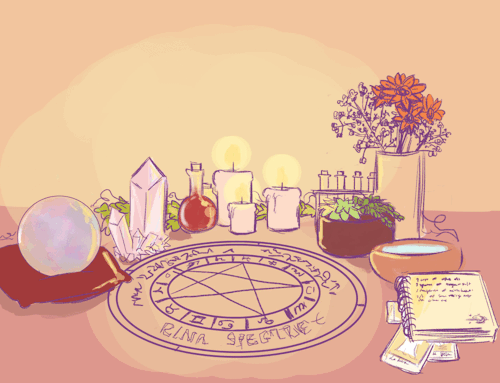
Decor for witches are typically very natural and have some kind of use. Decor is usually either foraged, thrifted, or made but there are certain items that must be bought from small metaphysical shops. Some things like crystals, flowers, and incense can have a purpose for the craft while others can be for the aesthetic and for happiness.
Key items include:
⦁ Crystals
⦁ Fresh or dried flowers
⦁ Grimoires/notebooks
⦁ Books relating to the craft
⦁ Stones
⦁ Mason jars
⦁ Plants
⦁ Sticks
⦁ Wands, drying racks, etc.
⦁ Trinkets you like
⦁ Found items in the wild, from thrift shops, or anything that has personal, spiritual, or symbolic meaning
⦁ Altar clothes and tapestries
⦁ Meditation corners
⦁ Canopies, floor pillows, etc
⦁ Incense and candles
Why We Love It...
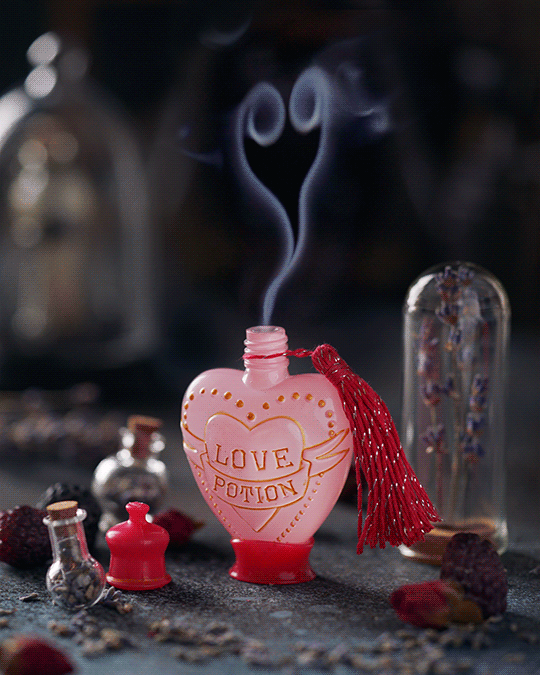
The witchcore aesthetic is another one we were exposed to in our youth. While we are no longer pagan, we were a practicing Wiccan for nearly 10 years. Even though we no longer practice, we take great comfort in the aesthetic itself. Perhaps it's nostalgia, having spent a large portion of our youth in magick shops, and bookstores. But we still find comfort, and beauty in the symbols and imagrey of witchcraft.

Shop this Marbled Moon Goddess Pattern design to create your witchcore style!
👀Explore the Witchcore Aesthetics Collection here
🛍️Visit our Shop here
👤Follow us on social media here
7 notes
·
View notes
Text

Excited to share this item from my #etsy shop: Photo locket, Pagan goddess, Wiccan locket, flower of life, pentagram necklace, moon face bead, gift for her, present for mother, #goddess #pentacle #wiccan #pagan #silver #birthday #starscelestial #unisexadults #celtic #blue #giftforwife https://etsy.me/3DiDcVz
1 note
·
View note
Text
SACRED RATTLE THE POWER'S IN YOUR HAND.

Just like the post I did on bells a rattle is not part of traditional hoodoo but if this is the item you feel attracted to I would suggest it.
One thing that every tradition, every culture, and almost every spiritual practice on earth shares in common is the use of the Sacred Rattle. Whether the rattle is a coconut or gourd maraca, filled inside with sacred seeds, or a latticework of glass beads or cowrie shells woven into a net and covering the outside of a dried gourd, such as it is with the Shekere or the cabasa; or a stick with shells, bones or nuts tied to one end.
The rattle in its many forms and shapes is one of three man made musical instruments found in some form in every culture and country. “The others being the drum and fluits.
In many places around the world the rattle always uses by individuals of power, such as a Shaman, witch doctor or Medicine men, conjure men etc. There are times that the Maraca and Sacred Rattles were viewed by Christians as the Devil’s instrument..
The various African and Indigenous earth related spiritual and religious systems within the Americas has and to this day uses its sacred rattle. Haitian Vodou has its Asson, Cuban Santeria uses its Asheke, Dominican 21 Division uses the Tcha Tcha, and Puerto Rican Sanse uses the Amaraca, which is also called the Matraca or simply la Maraca. The Caribbean Taino Bohique and Bohitu “Chamanes / Shamans” as the Shamans in every other culture also treasured their rattle.

The Maraca (rattle) is an instrument of great power, and similar to that of a European wand, used by wiccans, pagans or other magical systems.
Used for: These rattles are used to communicate with the realm of spirits, and summon deities. They could repel or vanquish unwanted spirits, heal, bless, activate the healing properties of roots, herbs, talismans, amulets, beads and stones. Like the European Wand, the sacred rattle is an extension of the body and works as the pointing finger in which we get our desires, and will pointed and focused outwards from the body. The sacred rattles are emblems that which is used to seek that which is Holy, and it establishes a connecting link between the material world and the spiritual realm. Through the proper use of the rattle, the Shaman could manifest the presence of spirits and deities.
Sound: The Maraca or Sacred Rattle works through sound vibrations, and is always used to concentrate a sacred space, and create protective barriers. In Haitian Vodou the Asson as is the Sanse Amaraca is used to summon the Loa, the Sances or the Messengers in Christianity uses a bell to call down saints, angels etc. While at the same time they can also ward of negative earth bound spirits which often get confused or can not tolerate the sound frequency. It literally acts as a Rattlesnakes rattling. Like the snake its rattling tail lete predators or unwanted energies and vibrations know that you acknowledge their presence.
Cleansing: Along side of herbs, tobacco, blessed waters and salt the sacred rattles are used for cleansing an individuals aura. It helps the practitioners of Shamanism, Sanse and Vodou in opening up blocked energy fields and help in binding or fixing weak or torn layers of the auric layers, which helps in re-establishing energy flow known as Ashe and removing psychic dirt or unwanted energy.
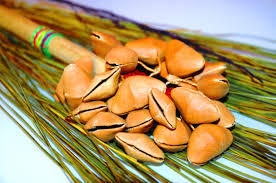
In Haitian Vodou they have a beautiful and unique sacred rattle which is unique to Haitian Vodou alone called the Asson. The Asson takes three different instruments and combines them into one. The rattle, the shekere and the altar bell.
In Sanse they don't combine the three into one, but use them separately and as I have stated often use them simultaneously.
The use of the sanctus bell is highly used in spiritual masses like Catholicism, lets all those know who have come to attend the event or church. In this case a supernatural event that's taking place before the altar. It is also rung heavily when a medium is about to mount a Loa or Spirit as a protective measure so that no earth bound or malignant force enters.
While the Rattle symbolizes the masculine phallic symbol, the bell represents the joining of both, the joining of the phallic with the yonic or vulvic “womb or vagina” to create life. The tongue or clapper of the bell is often made of two parts and symbolize the male semen and the female clitorus. (Bet you didn't know that) don't judge I read a lot) 😁
The ball part of the rattle can also be viewed as a womb, the sacred circle and earth. ”Present day Church bells derive from ancient Pagan traditions and not the other way around as most would have you believe. The bells are always rung to let those know a ceremony is to begin and when a ceremony is to end.
In traditional magic metal for bells should be iron, brass, or silver, and they are always kept on the house altars and shrines. Bells can be hung near doors on windowsills, outdoors and indoors. As the wind blows on bells and chimes it acts as a repellent for unwanted vibrations. Again sound vibrations very powerful.
Hope you enjoyed this post let me know your thoughts..
#Ritual rattle#Vodou rattle#Sound magic#Voodoo#Spiritual work#like and/or reblog!#likeandfollow#google search#Spiritual vibrations#Traditional hoodoo#Southern voodoo#Sacred rattle#follow my blog#like and subscribe#message me#ask me anything#Updated post
10 notes
·
View notes
Text

I have some prayer beads still available at the shop and on sale!
There are also mystery prayer beads available!
#christian witch#witch#witchcraft#pagan#wicca#christian witchcraft#wiccan#paganism#christianity#witchblr#prayer#prayer beads
14 notes
·
View notes
Text

Fond of the chase, earthy, slayer of wild beasts, blessed,
You dwell in the mountains and forests, hunter of deer, revered,
Mistress, queen of all, beautiful scion forever to be,
Haunting the forests, protectress of dogs, Kydônian, many-shaped,
Come, Goddess Deliverer, beloved one, to all your mystics.
-Orphic Hymn to Artemis translated by Thomas Taylor 1792
Artemis/Diana Prayer Beads
Shop | Instagram | YouTube
#artemis#goddess artemis#goddess diana#artemis prayer beads#diana prayer beads#witchblr#witchcraft#pagan#paganism#wicca#wiccan#hellenic#pagan prayer beads#goddess prayer beads
9 notes
·
View notes
Link
Check out this listing I just added to my Poshmark closet: PRETTY! Mookaite Jasper Gemstone Handmade Beaded Bracelet.
0 notes
Text
Unity rituals are a great way to add an extra layer of meaning to your wedding ceremony before exchanging rings and vows. From lighting candles to layering colors of sand, there's a wedding ceremony ritual to fit every couple's style. One of the most popular options is the handfasting ceremony.
What Is Handfasting?
Handfasting is an ancient Celtic ritual in which the hands are tied together to symbolize the binding of two lives. While it is most often included in Wiccan or Pagan ceremonies, it has become more mainstream and pops up in both religious and secular vows and readings.
As you consider integrating this tradition into your wedding, questions will likely arise: Who conducts it? What kind of material should we use? What color should it be? Where did the tradition begin, anyway? Ahead, we talk to wedding planner Michelle Johnstone Clark and investigate by breaking down the various interpretations and origins behind this wedding day tradition.
The History and Meaning of a Handfasting Ceremony
The handfasting ceremony has its roots in ancient Celtic tradition and dates as far back as 7000 B.C. In ancient Ireland, when two people chose to be married, they were brought together to have a braided cord or ribbon tied around their hands in the presence of a priest. This act merely acknowledged the pair's engagement, which typically ran the length of a year.
"It was a public declaration of intent to marry, signaling to potential suitors that the woman was intended to her betrothed and not to be harassed," Michelle Johnstone Clark, founder and lead planner of Water Lily Weddings explains. After the year was up, the couple returned to the priest and either declared their intent to be married or declared that they weren't a good match. Both would then be free to choose another suitor and bride.
Today, the tradition is incorporated into the wedding ceremony or is the main event itself. In addition to the binding of hands, vows are also typically exchanged.
Handfasting Ceremony FAQs
Who conducts the handfasting ceremony?
You can find someone who performs them regularly or you can simply have your officiate conduct it.
Does handfasting have to be done at a wedding ceremony?
It doesn't. It can be done during an engagement, when a couple makes the choice to live together or to celebrate a special ceremony, an anniversary, or a renewing of vows.
Can anyone participate in the handfasting tradition?
Handfastings are commonly used in Wiccan and Pagan ceremonies but anyone can take part in the tradition. It's become popular in modern-day ceremonies due to the "tying the knot" symbolism (and because it was shown on Game of Thrones).
How should the hands be tied?
Many opt to cross hands, taking your partner's right hand in your right hand and their left hand in your left hand.
You could also opt to stand next to one another, joining one of your right hands with the other's left, and have your hands bound that way, around your wrists.
Who should tie it?
Typically the officiant does, but as Clark explains: "Couples are now having members of their family tie the cord and we have seen couples add a number of ribbons or cords so siblings can help the celebrant tie the knot, which is really fun."
What kind of material should be used?
Traditionally, cords or ribbons are used. You can choose to still use either today or some couples choose to use cloth from sentimental items of clothing. As Clark suggests, you can also add charms to the end of the cords, like horseshoes, seashells, or beads. Furthermore, she adds, "For a stunning look that is organic and also deeply symbolic, think about having natural garland, vines, flowers woven together by your florist to serve as your handfasting cord."
How many pieces are needed?
You can use as many pieces as you like, but three is the standard so that couples can braid the pieces together, which symbolizes their lives joining together.
How long should the material be?
The cord or ribbons should be about a yard in length, which will allow for it to be wrapped around the hands a couple of times.
What color should the material be?
That's up to you. You can opt for colors that match the theme of your wedding or maybe colors that are special to both of you.
How long should we remain bound?
In medieval tradition, the couple is supposed to be tied together until midnight. You, of course, can take it off after the ceremony or wear it throughout the day (though that might make navigating the reception a little difficult). When you do remove it, it's encouraged to try to slip it off with the tie intact. Some couples even bring it home as a keepsake.
How to Have a Handfasting Ceremony
During the ceremony, the officiant begins by explaining the ritual and what it means to the couple. This statement often includes the notion of the couple binding their lives together and the union of their hopes and desires. The officiant then invites the couple to join hands, which symbolizes their free will to enter into the marriage. From here, the officiant reads a series of vows as cords are wrapped around the couple's hands. You could opt to use a separate cord for each vow, or twist or braid together a few cords and wrap them as one around your hands. Then, your officiant may make an additional statement about the completion of the binding and the commitment it symbolizes. After your hands are bound, you can proceed to exchange additional vows or use your handfasting as the vows you'll exchange and move directly to the ring exchange.
0 notes
